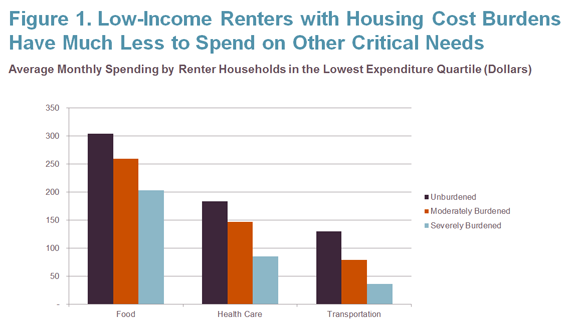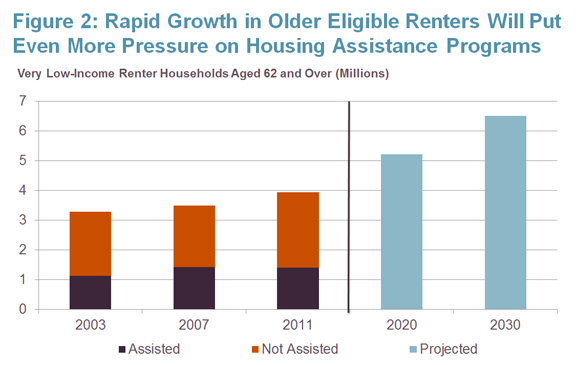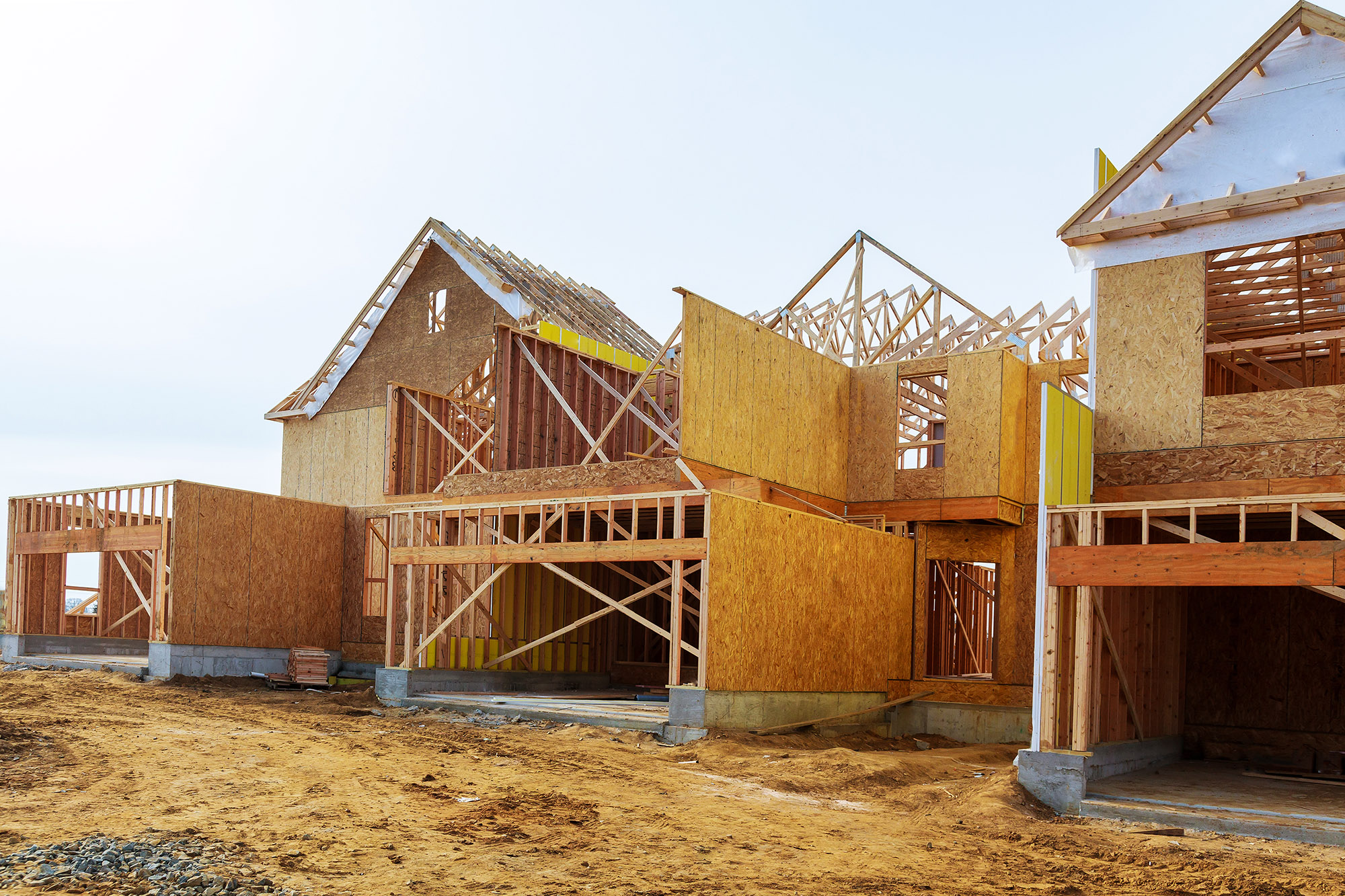Challenges Ahead in Housing America’s Very Low-Income Older Adults
The nation’s older population has grown tremendously since the first of the baby boomers turned 50 in the mid-1990s, with the number of 50-64 year olds nearly doubling between 1990 and 2010. As the baby boomers continue to age, the population aged 65 and older is projected to soar to 73 million by 2030, an increase of 33 million in just two decades. Given a larger older population, and assuming that the current income distribution remains the same, we can expect to see an increase in the numbers of lower-income older adults; indeed, in just a decade we estimate that households 65 and over earning less than $15,000 annually will increase by 37 percent to 6.5 million. Ensuring these low-income older adults are safely and affordably housed will require a great deal of leadership, creativity, and planning, particularly in the present federal budget environment.
Currently, the majority of low-income households aged 65 and over live in housing considered “unaffordable:” fully 73 percent of those with annual incomes under $15,000, and 48 percent of those with incomes between $15,000 and $30,000, were housing cost burdened in 2013 according to the American Community Survey, paying more than 30 percent of their income on housing. Housing-cost burdened households have less to spend on critical needs like food, healthcare, and transportation (Figure 1), and for those in their pre-retirement years, on retirement savings—which has consequences not just for quality of life today, but also for financial security in the future.

Source: JCHS tabulations of the US Bureau of Labor Statistics, 2013 Consumer Expenditure Survey.
We’re already seeing a growth in the older low-income population. The number of households aged 62 and over earning less than 50 percent of area median income (a common eligibility threshold for rental assistance programs for the “elderly”) increased by 21 percent from 2003 to 2013 to almost 4 million. At latest estimate in 2011, only about a third of this group benefits from rental assistance (HUD, 2013). Of those who do not, a substantial number face worst case housing needs – defined as living in severely inadequate units, paying more than 50 percent of their income on housing (with the repercussions of reduced spending on other necessities mentioned above), or both. According to HUD, nearly 1.5 million very low income older households had worst case housing needs in 2013 – an increase of 31 percent from 2003 to 2013.
Going forward, assuming income distributions remain similar to today, the expanding older population means millions more older renters will have very low incomes and potential housing affordability problems in the years ahead. Just to keep the share receiving federal rental assistance at its current level, the number of older renters receiving assistance would have to rise by 900,000 by 2030 – which would still leave 3-4 million income-eligible renters without assistance and on their own to find housing in the private market (Figure 2), vulnerable to worst case housing needs. On top of these concerns, even as the need for assisted housing is growing, contracts for hundreds of thousands of units of units with project-based rental assistance are set to expire over the next decade.

These estimates are based on current income distributions, yet current trends may reshape the income profile of older adults in the future. Fewer of today’s workers earn pensions that have traditionally provided support for moderate-income retirees. According to the Bureau of Labor Statistics, 35 percent of all private industry workers were covered by pensions in the early 1990s, a rate that stood at only 18 percent in 2011. Increasing numbers of American have 401(k) plans but these have not resulted in the same savings achieved through pension benefits. Meanwhile, real incomes have been falling for those in their pre-retirement years, while housing and non-housing debt have been increasing for those 50-64, likely reducing assets that can be drawn upon later in life. In addition, the older population of the future will be more racially and ethnically diverse, reflecting shifts in the population as a whole; this may shift the income distribution for older adults downward, as African Americans and Hispanics have historically had lower incomes (as well as homeownership rates).
With rapid population growth and worrisome trends in income, debt, and savings, preserving and creating more affordable units and ensuring sufficient subsidy to meet the needs of older low-income renters requires action at all levels. At the local level, communities can encourage the production of market-rate but lower cost housing options, including accessory dwelling units, rental housing in town centers, and apartments located near safe and accessible transit (particularly important because low-income renters are less likely to own cars). Though changing local regulations to allow such development and overcoming NIMBY opposition to rental housing pose challenges, increasing affordable housing options is important not just to older adults who wish to age in their communities, but also to cost-burdened rental households of all ages and composition.
Securing the resources that will help preserve and build new assisted units and ensure the availability of rental subsidies for those at the bottom of the income scale is undoubtedly an immense challenge, particularly given that pressures on non-discretionary portions of the federal budget (including Medicare, Medicaid, and Social Security) are also growing as the population ages. Yet looking holistically at the role of affordable housing in older adults’ overall health may help make the case that safe, affordable housing creates savings to the federal budget through the healthcare system. HUD and HHS are now working together to study the benefits of coordinated health services and supportive, affordable housing in Support and Services at Home (SASH) program in Vermont; evidence from this and other studies may point to the fiscal wisdom of investing in affordable housing for older adults.

